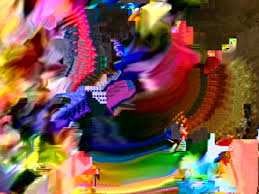
Once seen as technical flaws, glitches are now a celebrated visual language in contemporary art. Glitch aesthetics embrace the beauty of imperfection, distortion, and error. From corrupted files and pixelated visuals to unexpected color shifts, artists are transforming digital malfunctions into striking creative statements.
This aesthetic reflects our deepening relationship with technology—where failure is as integral as function. By intentionally “breaking” images, artists reveal the fragility of digital systems and question our reliance on perfection in an increasingly digitized world.
In visual art, glitch techniques include datamoshing, image corruption, and intentional code manipulation. The result is artwork that feels unpredictable, raw, and emotionally charged. It speaks to themes of digital overload, surveillance, and identity in the age of social media.
Glitch art is also inherently democratic. With simple tools or software experiments, even emerging artists can create compelling works. This accessibility aligns with its rebellious spirit—glitch aesthetics challenge mainstream design ideals and institutionalized beauty standards.
Many artists use glitches metaphorically—to express trauma, memory loss, or existential fragmentation. Others use it to critique consumer culture, arguing that digital perfection has become a trap.
In a world striving for polished presentations, glitch art boldly embraces the broken. It transforms digital error into a new form of creative authenticity, celebrating chaos as a source of meaning and innovation.
